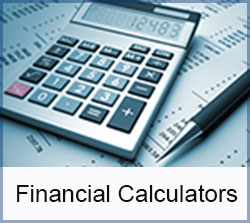
TFSA or RRSP? 2024
One of the most common investment questions Canadians ask themselves today is, “Which is better, TFSA or RRSP”?
Here’s the good news – it doesn’t have to be an either or choice. Why not do both? Below are the features of both plans to help you understand the differences.
Tax-Free Savings Account (TFSA)
Any Canadian resident age 18 or over may open a TFSA. Contribution is not based on earned income. There is no maximum age for contribution.
- From 2019 to 2022, the maximum contribution each year has been $6,000, was increased to $6,500 in 2023. In 2024, the contribution has been increased again to $7,000.
- There is carry forward room for each year in which the maximum contribution was not made. For those who have not yet contributed to a TFSA, the cumulative total contribution room for 2024 is $95,000 and will increase each year in January. The TFSA was first introduced in 2009.
- The deposit is not tax-deductible, but the funds accumulate with no income tax payable on growth.
- Withdrawals may be made at any time on an income tax-free basis. Withdrawals create additional deposit room commencing in the year after withdrawal.

TFSAs aren’t just for short-term savers anymore
It’s been a decade since the TFSA was born. It’s grown up quite a bit over that time.
By Bryan Borzykowski for MoneySense.ca
It was hard to know it at the time, but February 26, 2008 has become one of the most significant dates in Canadian investing history. That afternoon, Jim Flaherty, then Minister of Finance, unveiled the Conservative party’s budget and, for the first time, mentioned the Tax-Free Savings Account. On January 2, 2009, the first TFSA was opened and $5,000—the maximum contribution limit that year—was deposited by some savvy investor.
When Flaherty introduced the TFSA, he listed a variety of ways someone might use the account. An RRSP, he said, was meant for retirement savings. A TFSA, where after-tax dollars can grow tax-free, was “for everything else in your life,” like buying a first car, saving for a first home and setting aside money for a “special project” or a personal indulgence. With contribution room only increasing by $5,000 per year for the first few years, using it to save for something made a lot of sense.
Read the rest of the article at www.moneysense.ca

TFSA or RRSP? 2019
One of the most common investment questions Canadians ask themselves today is, “Which is better, TFSA or RRSP”?
Here’s the good news – it doesn’t have to be an either or choice. Why not do both? Below are the features of both plans to help you understand the differences.
Tax Free Savings Account (TFSA)
- Any Canadian resident age 18 or over may open a TFSA. Contribution is not based on earned income. There is no maximum age for contribution.
- For 2018, the maximum contribution remains at $5,500. For 2019, that increases to $6,000.
- There is carry forward room for each year in which the maximum contribution was not made. For those who have not yet contributed to a TFSA, the cumulative total contribution room for 2018 is $57,500. It will increase in 2019 to $63,500. Read more


TFSA or RRSP 2018
One of the most common investment questions Canadians ask themselves today is, “Which is better, TFSA or RRSP”?
Here’s the good news – it doesn’t have to be an either or choice. Why not do both? Below are the features of both plans to help you understand the differences.
Tax Free Savings Account (TFSA)
- Any Canadian resident age 18 or over may open a TFSA. Contribution is not based on earned income. There is no maximum age for contribution.
- Maximum contribution is $5,500 per year.
- There is carry forward room for each year in which the maximum contribution was not made. For those who have not yet contributed to a TFSA, the cumulative total contribution room as of 2017 is $52,000. Read more


